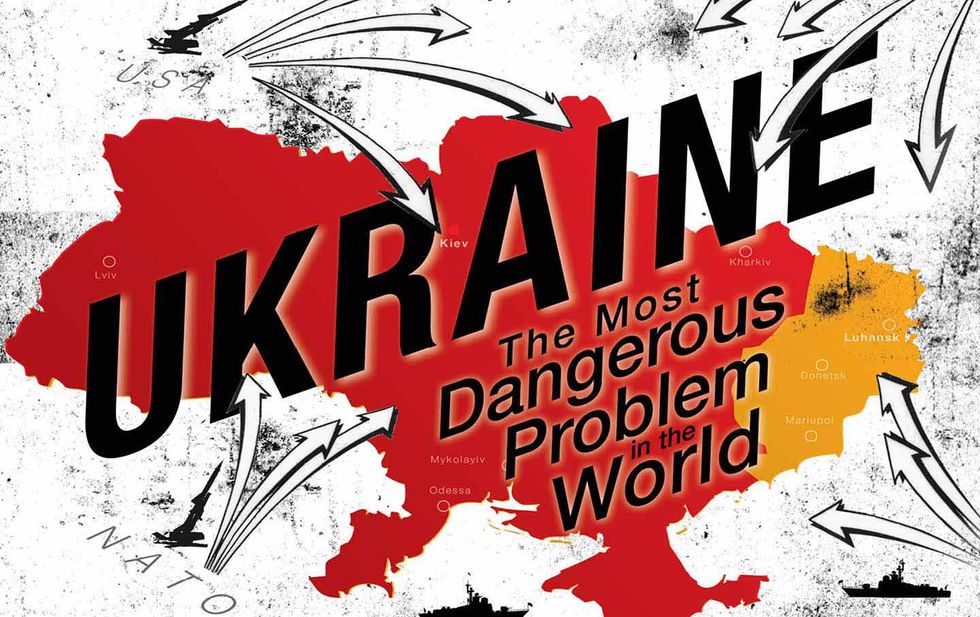Ukraine, a contested country, finds itself amid a bloody conflict for strategic control between two political archrivals: Russia and NATO.
Since Russia annexed Crimea in 2014, Ukraine has been at war. NATO responded to the Russian aggression by carrying out drills and bolstering its military presence in the country. In a tit-for-tat scenario, Russia gave its full support to a military rebellion in the eastern Donbas region of Ukraine called Donetsk.
Ukraine is likened to the story of a male lion and a male tiger in a fight, each pulling one side of a prey (an impala, for instance) with the victor to own the entire prey. What ensued is a proxy war that, so far, lasted seven years and that caused more than 14000 deaths. The Minsk agreement brought no resolution to the conflict.
Today Ukraine has become the epicenter of cynicism and Cold War between the two spheres of political ideology. Vladimir Putin views the romance of Ukraine with NATO as unacceptable. He already had to swallow his pride by grappling with the reality of a Western military expansion in some former Warsaw Pact nations: Estonia, Latvia, Lithuania and Romania, etc.
Russia seems to have lost its influence over those former allied countries. Some of them are fully westernized, and others have been granted NATO memberships. But the worst fear for Putin is this: Ukraine membership in NATO or its integration in the European Union. If Ukraine ever completely slips away from Russia's claws, no one knows how Putin would react based on his perception of Ukraine.
Putin always perceives Ukraine as culturally and economically tied to Russia. He strongly believes that the ex-Soviet Republic is not a sovereign state but a territorial extension of Russia. He blames the West for creating a “wall” between the two neighboring countries.
Putin wrote, “Step by step, Ukraine was dragged into a dangerous geopolitical game aimed at turning Ukraine into a barrier between Europe and Russia, a springboard against Russia.”
Now Ukraine and Russia are very dissimilar and on different political paths. It is nearly impossible for those two countries to reconcile their differences. What Putin wants for Kyiv is in sharp contrast with the wishes of Pres. Zelenski and the Ukrainian people. He wants Ukraine away from NATO and the European Union; in contrast, the Ukrainians would gladly welcome a bid for membership in both political and economic bodies.
Suddenly, tensions escalated ahead of the Biden-Putin video call that took place on Dec. 7, 2021. The U.S. Intelligence warned about a massive Russian buildup along Ukraine’s borders. Fear ran wild. Russia deployed some 175 thousand troops likely in preparation for the invasion of Ukraine. NATO views this military deployment as a sign of aggression.
So a state of high alert and preparedness for war permeated NATO countries. Pres. Emmanuel Macron of France warned Russia of the imminence of war. Some U.S. senators talked about a preemptive nuclear strike, oblivious of Russia’s highly sophisticated defense apparatus. The West is playing with fire. One would speculate that it’s tension for the sake of it, but neither side wants war.
The conflict in Ukraine puts NATO and Russia on a collision course. The former wants to have Ukraine so it could be militarily at Russia’s doorstep; the latter anxiously tries to usurp control of Ukraine to turn it into a buffer zone between East and West.
All the political cynicism and tensions over Ukraine serve the interests of the two bickering powers. As an independent country within its borders, Ukraine should be free from foreign meddling and Ukrainians should be left alone to decide their destiny and which political alliance they wish to be a part of.


















